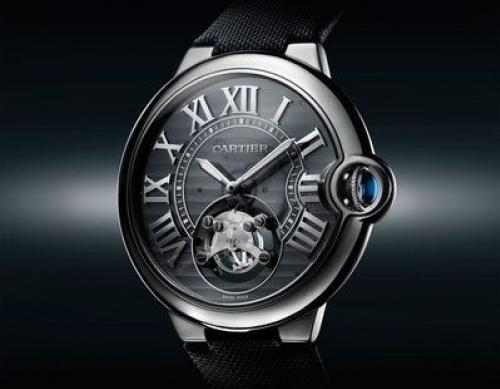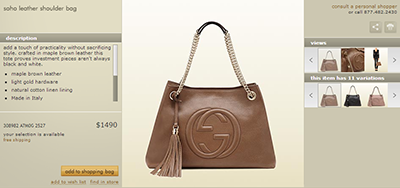Franchising, retail, business

29/09/2014
The fight against counterfeits is a never-ending struggle, exacerbated by the global, online marketplace.
Luxury brands continually seek to win far-reaching court decisions to thwart the capabilities of counterfeiters, only to encounter new opponents and tactics. Now, new technologies are popping up to help brands crowdsource enforcement, but it is still too early to see if they will catch on.
“The gains [of fighting counterfeits] are significantly greater than the financial savings,” said Tzachi Weintraub, founder of Real EyeD, New York. “Luxury brands have unique characteristics that inspire us to buy and showcase them to the others.
“Depending on the brand, they provide us a sense of worth, accomplishment, success, status etc,” he said. “As brands become more seen, their exclusivity diminishes and their buyer looks to others.
“Millions of dollars and many years are spent developing brand equity. Counterfeits quickly diminish this investment by chipping away at the consumer’s experience with the brand. All counterfeits are of inferior quality, but the consumer doesn’t often recognize them as fakes. So counterfeits lower consumer expectations of what the brand has to offer.”
More than headaches
The chief problem with counterfeits is that they flood the market with cheap imitations that siphon the allure of the original product — a Louis Vuitton bag is less desirable if everyone has one.
“What has not been quantified is the impact to the brand,” Mr. Weintraub said. “As counterfeiting continues to grow, consumer confidence and trust will diminish.
“Moreover, as counterfeiting grows, the exclusive nature – read price – of your product will be impacted,” he said. “People don’t want to spend $2,000 on a purse only to see 100 when they get on the subway.”
The Organization of Economic Cooperation and Development estimated that global counterfeit sales in 2014 will hover around $650 billion, a figure expected to climb in the coming decade.
The Internet gives counterfeiters far greater visibility and reach, beyond street stalls and storefronts, and may allow for more deception. Someone buying a counterfeit in person generally knows that the product is a fake, but the distinctions can be less readily perceived online.
For instance, if a consumer searches for a sale on a specific luxury brand’s products through a search engine, a result for a counterfeit Web site that appears credible may come up.
The phony Web sites can be convincingly arranged and tend to use pirated images and cues such as discount deadlines to motivate impulse purchases. In doing so, these sites not only peddle fakes that enter the market, but can also discourage a consumer who legitimately wanted an authentic product from seeking the brand out in the future.
Also, security concerns are raised since credit information is supplied for such transactions.
On the other hand, some consumers may simply feel more comfortable buying counterfeits online than in person because they feel distanced from penalties. From this perspective, the Internet can vastly open up the amount of consumers turning to fakes.
Many luxury players have sought to eliminate this nuisance once and for all by sterilizing the Internet, forcing search engines and online service providers to either remove counterfeit sites or make them impossible to come across without typing in specific URLs.
Luxury conglomerate LVMH Moët Hennessy Louis Vuitton joined forces with Google to combat the persistence of counterfeit goods.
The move marks the end of an extensive legal battle against Google by LVMH, which claimed that the technology company’s AdWords enabled counterfeiters to thrive (see story).
Google has been forced to take a more active role in policing the Internet in the past. Beyond routinely removing malware and other noxious material, Google now has to remove certain search results that impinge upon a European citizen’s privacy after losing a court case in the European Union.
LVMH has achieved other anti-counterfeit victories.
For instance, the conglomerate and online auctioneer eBay have settled a long-standing court battle over the selling of knock-off goods.
LVMH filed complaints against eBay in 2006 over intellectual property rights and the online sale of counterfeit goods, and eight years later the litigation has finally been settled. The court decision will create a cooperative ground for the two companies to jointly fight the sale of counterfeit items (see story).
Some luxury brands have gone after specific enablers.
For instance, French jeweler Cartier just put forth a lawsuit in London calling for any Web site that features pirated trademark logos to be pulled down by online service providers.
Critics of the lawsuit say that a victory could have unintended and far-reaching consequences such as leading to an entire Web site being disabled due to the actions of a few sellers.
Working with marketplaces and search engines may be effective in the long-term, because many consumers mistakenly buy counterfeit goods through these portals. For instance, a consumer typing in Louis Vuitton on Amazon may be greeted by a bevy of knock-offs proclaiming authenticity.
However, Mr. Weintraub emphasized that going after specific players, while important for stamping out current violators, do little for the long-term threat of counterfeiting.
As soon as one Web site is dismantled, counterfeiters can always buy another domain or set up shop on another marketplace.
Crowdsourced enforcement
Some companies have sought to help brands with technology that gets consumers involved.
One new solution comes from Real EyeD, which aims to empower consumers and increase transparency.
The concept works by giving each product an unique code in the form of a scratchable QR code sticker. When consumers buy a product, they can verify the product authenticity by scratching the sticker and scanning the concealed QR code.
The QR code then allows the brands to check how serious the notion of crowdsourcing enforcement really is, and creates a dialogue with consumers.
Mr. Weintraub believes that this concept has great potential since many consumers who end up with counterfeits sincerely wanted an authentic product in the first place. The ID provides peace of mind and may even create authenticity evangelists who influence friends and social media followers to always check a product’s ID.
He noted that while it is impossible to fully eradicate the problem of counterfeiting, if brands are able to stop 10 or 20 percent of counterfeit sales each year through authenticity checkers, it will be a worthy investment, both financially and reputationally.
Some sort of community-based or product incentive may have to be added to persuade consumers to act.
Other methods also put the fight into consumers’ hands.
Mobile application uFaker aims to stave off the growing problem of counterfeiting by arming brands with timely information and getting consumers involved in the fight.
The counterfeiting technology also extends to a Web site and social platform that together mobilizes brand enthusiasts to document suspicious activity for chances to win monthly “Brand Hunter” prizes. If the technology grows, brands will likely develop a stronger hold on the issue and coordinate more focused anti-counterfeiting actions (see story).
“Brands need to be able to fight this problem both at the manufacturing level and the consumer level by generating greater consumer awareness of the problem and the solution,” Mr. Weintraub said.
By:http://www.luxurydaily.com/luxury-brands-look-to-courts-crowdsourcing-to-fight-counterfeits/